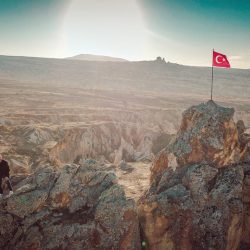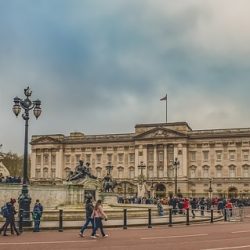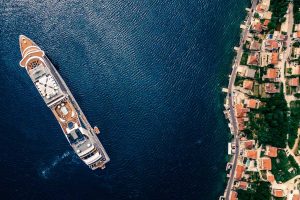
There aren’t any certain facts about either the time of the creation of Church Ružica or about its founder. It is, however, certain that it has been among the oldest Churches in Belgrade, which can be proven by the fact that people started gathering money for its restoration on the day of handing over the key of Belgrade Fortress.
Soon afterward, a council was formed for collecting means for the Church renewal.
Sofija, a council member, wrote to Sava Jovanović, the head of the retirement department in Požarevac:
“When God, after many centuries, bestowed Church Ružica on Serbs again in the town of Belgrade, which had been a Turkish slave hitherto… ” (a publisized letter in Službeni Glasnik SPC in 1967).
The exact time of its creation before the Turkish subjugation cannot be specified, although some analysts state that the time of its creation was during the period of despot Stevan Lazarević, who renewed old and founded new Cathedrals in Belgrade.

There are also sacred books, 12 Menaia and 2 Oktoikhs, from the period after the liberation of Belgrade Fortress. They were bestowed by a politician Stevan Stevanović Tenka’s daughter and have been used by the Church until now.
Folk Tales about the Church
According to a folk tale, there were three religious sisters: Ružica, Marica and Cveta or Anica, and each of them raised a Church as their legacy in the area of Belgrade Fortress and named the churches after them.
Another legend tells that in former times there was a king who had a daughter Ružica, who was taken ill one day and nobody could help her anymore.
Then the king recieved news that his daughter would recover if somebody brought her to drink water from a spring at the confluence of two rivers. A knight found a confluence place of the Sava and the Danube and brought the water to the king’s daughter who promptly got well.
To express his gratitude, the king constructed a Church on that place and named it after his daughter Ružica.
The Reconstruction of Church Ružica
As soon as the Turks abandoned the Fortress, Metropolitan Mihailo immediately embarked on the Church reconstruction. He sanctified the Church on 10th December, 1876, and handed it over to the garrison of the Fortress to use it as his martial Church…
On the day of Mala Gospojina in 1868, Church Ružica celebrated its first holy day, and its renewal and decoration was continued after its sanctification. Preserved bills certify that a roof was built over the altar in September 1869 and that the whole Temple was covered again. The construction of the steeple was finished in the spring of the same year, and the cross was set on the steeple in the autumn.

Misfortune of Church Ružica during World War I
During the Austro-Hungarian War when Serbia and Belgrade were attacked, Church Ružica was one of the main target for the cannon attacks across the Danube in the middle of the worst fights.
Next to the Churh there was a battery that had courageously been fighting until it fired its last grenade. The enemy’s cannon grenades tore down the tower of the Church and demolished the altar part of the Temple to the grounds. Amazingly, a shot grenade remained unactivated for a longer time besides the Church. As the war ended in 1918, freedom awaited The Temple, which was lying in ruins.
The Second Reconstruction of Church Ružica in 1925
After World War I, the reconstruction of Church Ružica began and a council was formed for the Church renewal in 1921. The Ministry of the army and navy force supported the restoration.
Military-technological department in Kragujevac made out of war material three chandeliers, three candleholders and two metal icons in relief above the Church door, dedicated to the Birth of Holy Mother of God and Saint George. Besides, two statues were crafted and placed in front of the Church door, one of which representing Tsar Dušan’s spearman, the other representing an infantryman from Balkan wars.
The Church was sanctified on 11 October, 1925.
Iconostasis of Church Ružica
Wooden shelves of the iconostasis were decorated with engravings and gilt by a carpenter Kosta Todorović, and the icons of the iconostasis were painted by Rafailo Momčilović , a flawless painter, who had gained his iconographic skills from Russian iconographers. It is significant to mention that he donated all his gain to the building of Cathedral of Saint Sava in Belgrade, the work of which had started before World War II.

Several icons have been preserved in Church Ružica in memory of World War I. Then there were wounded soldiers who were transfered by the French to army camps in North Africa (Tunisia and Algeria) in order to be cured.
Since they were not able to help their friends because of their physical disabilities, they decided to pray to God for them and seek God’s help. As a result, they built a Temple in the camp, due to the help of the Allies. When the war ended, the Serbs took with them several icons from the camp with the permission of the French government. There were six of them, but unfortunately, only two icons have been preserved and kept in Church Ružica.















Add Comment